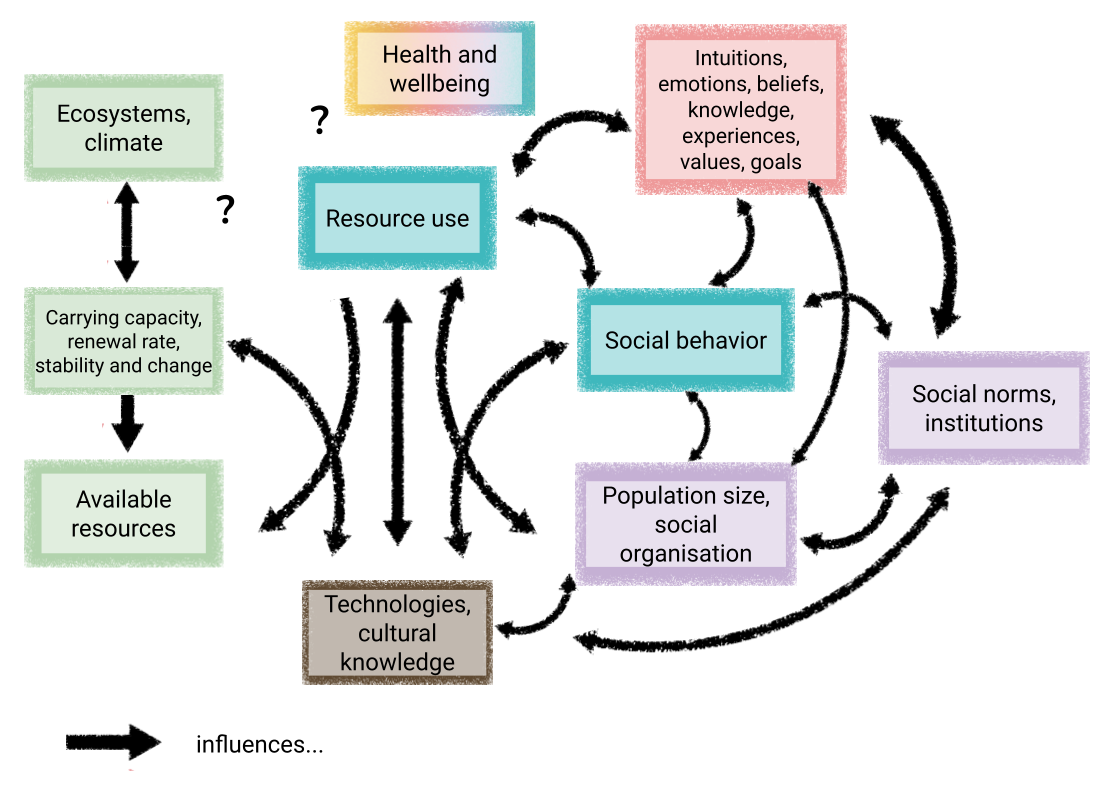Causal Mapping
System Archetypes
Complex systems seem to be characterized by recurring structures and dynamics.
The concept of system archetypes describes some of these typical system structures and dynamics.
Here you can play through and explore some important system archetypes using the program Loopy.
System archetype: Tragedy of the Commons
The system archetype “Tragedy of the commons” describes the overuse of shared limited resources due to the combined effects of the behaviors of individual users who try to maximize their resource use.
This dynamic is inherent in almost all sustainability problems, which is why they require cooperation between resource users in order to use the shared resource sustainably, such as by agreeing on rules for resource use and monitoring the state of the resource.

Evolution, Cooperation, and Sustainability
A lesson collection on evolution, cooperation, and sustainability
Begin the following simulation with the variables “Resource use by A” and/or “Resource us by B” upwards.
(Tip: Use the speed control if necessary, click Reset to start from the beginning, and click Remix to make your own changes to the diagram with Loopy)
System archetype: Escalation
The system archetype “Escalation” describes the dynamic of an arms race. It applies to many issues in a world that fosters and rewards the competitive advantage over individuals (or individual groups) over cooperation. More and more resources are being invested in being “better than the others”, rather than in other areas that might be important.
Begin the following simulation with the variable “Action of A” upwards. How does the system develop and which system dynamics are responsible for this?
System archetype: Success to the successful
The system archetype “Success to the successful” is inherent in many issues of rising inequality, from performance in school and access to educational opportunities to economic wealth and concentration of political power. It entails the interaction of two reinforcing feedback loops, where “the rich get richer” and “the poor get poorer”.
Begin the following simulation with “Resources for A” variable going up. How does the system develop and which system dynamics are responsible for this?

Connecting the past, present, and future – Social (in)equality
Information about the causes and consequences of social inquality
System archetype: Shifting the burden
The system archetype “Shifting the burden” describes how we might often engage in short-term or superficial fixes of problems, which do not really resolve the problem in the long-term and can create new problems.
An example is the problem of “overheated buildings” where the short-term solution is the installation of air conditioning, which then contributes to climate change as a bigger problem, which further contributes to the original problem.
In fact, such a dynamic can happen in ourselves, such as when we try to quench temporary feelings of discomfort, boredom or tiredness with substances, which can then lead to addiction as a new problem.
Begin the following simulation with the “Problem” variable going up. How does the system develop and which system dynamics are responsible for this?
This diagram includes the effect of a long-term solution. Begin the simulation with the “Problem” variable going up. How does the system develop in comparison to the system above, and which system dynamics are responsible for this?
References
Moallemi, E. A., Hosseini, S. H., Eker, S., Gao, L., Bertone, E., Szetey, K., & Bryan, B. A. (2022). Eight Archetypes of Sustainable Development Goal (SDG) Synergies and Trade-Offs. Earth’s Future, 10(9), e2022EF002873. https://doi.org/10.1029/2022EF002873

